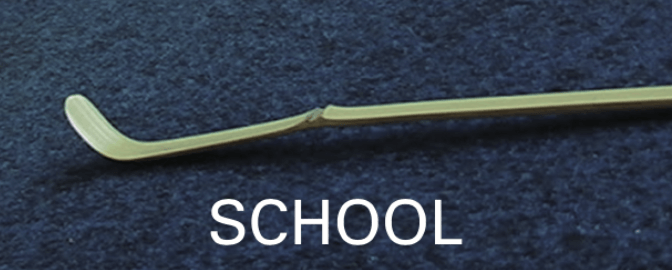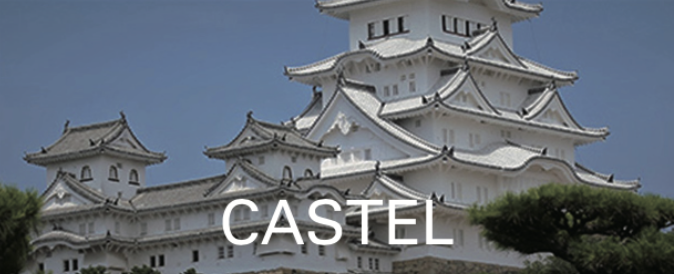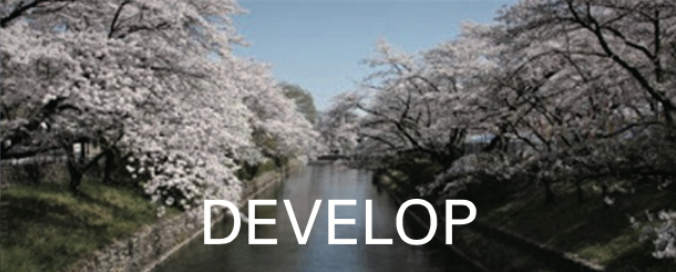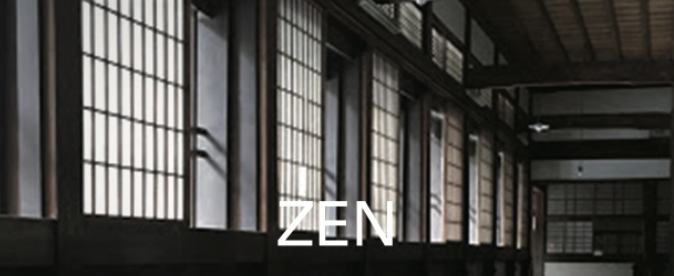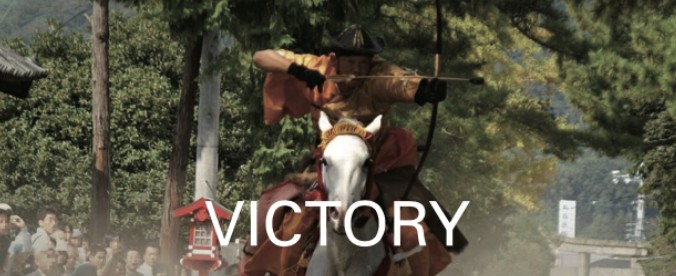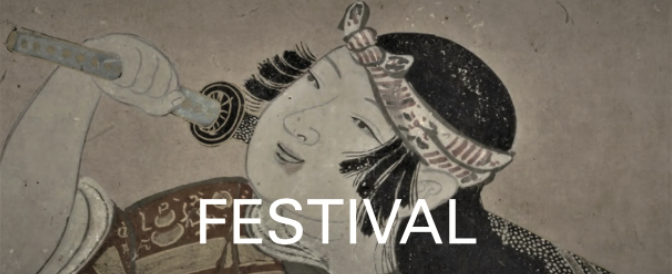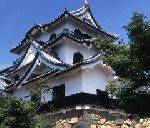
Hikonejo Castle never fought, and the castle tower was a symbol of the Hikone Domain, looking up from the castle town rather than being used by the feudal lord. And “Hikonyan – a white cat wearing a war helmet” is the character of this national treasure. The Hikonejo castle construction 400 years festival, has a model of a white cat related to Ii Naotaka (1590 – 1659), the 2nd lord of Hikone Domain Omi Province.
The war helmet of “Hikonyan” comes from the red war helmet handed down by the Ii family, of which only red-colored arms and armor were used.
The culture of the Iie family,the feudal lord of Hikone Domain was also revived at the festival and are introduced at Hikonejo Castle Museum.
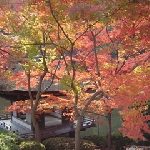
This castle boasting its majestic figure in the high view of the Mt. Trafusuyama is a National Treasure.This castle was built by Toyotomi Hidenaga (1541 – 1591), a feudal
lord and the younger brother of Toyotomi Hideyoshi, a powerful feudal lord and Imperial Regent, who unified Japan.
Later, Tokugawa Yorinobu (1602 – 1671) entered this castle as feudal lord. Yorinobu was a feudal lord, the founder of the Kishu Tokugawa clan, and was the tenth son of Tokugawa Ieyasu (1543 – 1616), the founder of the Tokugawa Shogunate.
After that, this castle had the most important position in the western part of Japan. In the northwest foot of the castle, there is the Momijidani, Maple-valley, garden, built by Yorinobu. He designed the pond to have two stages and waterfalls, by using sloping land, and set an arbor by a lake, named Engyokukaku at the inner moat.
It was a rare example to build a garden with a tea-ceremony room and an arbor, within the wall of a castle.
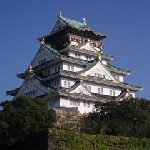
This castle is located at the northern end of the Uemachi plateau, where the ancient the Naniwa no Miya, Naniwa Palace was located, and is built on the site of Osaka (Ishiyama) Honganji temple, which was developed from the hermitage and the vihara of Rennyo (1415 – 1499) a head-priest of the Honganji temple, and descendant of Shinran (1173 – 1263) who was the founder of the Jodo Shinshu.
This castle was built by Toyotomi Hideyoshi (1537 – 1598), the powerful feudal lord and Imperial Regent who unified Japan. This museum exhibits items associated with Hideyoshi, materials related to the Age of Provincial Wars in the 15th – 16th centuries and Osakajo Castle, including a full-size reconstructed model of the golden tea room, and others.
– The castle used to have a black-lacquered siding structure, like Azuchijo Castle, instead of white walls.
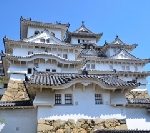
Himejijo Castle was built by Ikeda Terumasa (1565 – 1613), a feudal lord in the early Edo period. This castle was built at Himejioka, where Himeko, the silkworm settled down from the wrecked God ship, according to Harimanokuni, Harima Province Fudoki, description of Japanese regional climate, culture, and others.
This castle has a castle structure of triple helix and labyrinthine aisles. This castle tower was designed with a high variation of wide and narrow corridors.
The Himeyama virgin forest is natural vegitation at the inner moat, northeast of Honmaru, the keep of a castle to the southern end of Nishimaru, the western citadel. It is a unity of culture and function.

Toyamajo Castle was built during the Age of Provincial Wars in the 15th – 16th centuries, and flourished as the castle of feudal lord of the Toyama Maeda family during the Edo period (1603 – 1868). Another name of this castle was Ukijo, a floating castle, which has the moat drawn water from Jinzu River. The moat surrounded all sides, and made it a solid castle. This castle was one of castle model of the Song, The Moon over the Ruined Castle sings a cherry-blossom-viewing feast on the castle tower in the spring.
The museum introduces the castle history of 400 years, and Sato Memorial Museum of Art exhibits a collection of paintings and ceramics, mainly oriental antique arts.
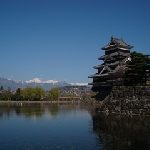
This castle was built for the Governor of Shinano Province Ogasawara clan. Ishikawa Kazumasa (1534 – 1592), a feudal lord and his son, Ishikawa Yasunaga (1554 – 1643), a feudal lord, developed this castle and the castle town, during the Azuchi-Momoyama period (1573 – 1603).
The 5-story and 6-floor castle tower built in 1593-1594 is Japan’s oldest castle wall and the national treasure castle tower. Inui Tenshu, a small castle tower in the northwest is connected to the north side of the main castle tower. Tatsumitsuke-Yagura, the turret in the southeast and Tsukimi-Yagura, the moon viewing turret are complexed to the east side of the main castle tower. Black-lacquered siding is used on the outer wall.
This castle has been standing 400 years behind the Northern Alps

This castle tower was completed by Tokugawa Ieyasu (1543 – 1616), the founder of the Tokugawa Shogunate in 1612. Ieyasu let Katou Kiyomasa (1562 – 1611) build this castle’s tower stone walls with the highest technology. Kiyomasa was a feudal lord, who built Musha-gaeshi, curved stone walls in the Kumamotojo Castle.
Ieyasu also let Kobori Enshu (1579 – 1647), architect this castle tower. Enshua was a feudal lord, a master of the tea ceremony, an architect and garden designer, who designed the Sento Imperial Palace in Kyoto, Hinoki, Japanese cypress, were delivered from Kiso Mountains to Nagoya through Kuwana by making a raft of logs and sending it down the river.
This castle tower was architected to a unique Sotogata, multi-leveled tower type. It kept using those trees, which has the extreme details designed in its stability. The top of the castle tower is in the Enshu-style. It has the statue of a killer whale which is said to call for water of firebreak.
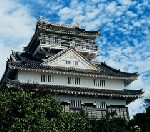
The area around Mt. Kinkazan used to be the sea, during ancient times. Mt. Kinkazan became a rocky mountain with a steep slope, due to the long-term crustal movement. An impregnable castle was built at the summit of the mountain.
Oda Nobunaga (1534 – 1582), the legendary warlord and the military dictator, captured the castle and became the lord of the castle, 1567. “Those who command Mino Province would reign over the whole country of Japan.”
There is the Nagara River underneath this castle, the source of the power of its water transportation, and the power of its economy by Rakuichi・Rakuza, free market and open guilds. In this castle, Nobunaga viewed over the figures of a modern country for the first time.
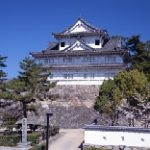
Fukuyamajo Castle was built by Mizuno Katsunari (1564 – 1651), a feudal load, a general of the Tokugawa Shogunate, as a base for the protection of the western part of Japan, to the Tokugawa Shogunate. This castle has a splendid appearance with 3-stories of white walls and is the last completed fine castle in the Edo period. Japanese have been awe-inspired by nature since ancient times.
The beauty of the Samurai took the passage of the nature and made it a power to live. The preserved early modern castle tells us of the Tokugawa Shogunate’s strategy to create beautiful scenery as a symbol and the admirability of the early modern Daimyo, feudal lord, culture.
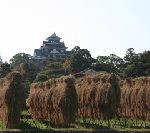
-This castle will be closed from June 1, 2021 to about the fall of 2022 due to a large-scale renovation. During this construction, Ujo Park (excluding Ishiyama Park) will also be restricted from entering.
Okayamajo Castle is a jet-black Kinujo Castle, a sacred bird of castle. This castle was built under the guidance of Toyotomi Hideyoshi (1537 – 1598), the powerful feudal lord and Imperial Regent who unified Japan, and was completed during the days of the Ikeda feudal lord under the Tokugawa Shogunate in the Edo period (1603 – 1868).
This castle shines on the surface of the river. Okayama Koraku-en, one of the Three Great Gardens of Japan, along with Kenroku-en, and Kairaku-en, surrounds like earthen walls, the opposite bank in the northeast of Honmaru, the keep of a castle. Okayama Koraku-en was made in the Edo period.
Originally Hideyoshi built a castle in this area in order to protect Kyoto and Osaka from the Mouri clan, the great feudal lord in the western part of Japan. Therefore, there is no defense palisade in the east of the castle. It is the admirability of the huge garden that has the meaning of extending the ranges of bow’s and arrow’s shot and gunshot to the castle.

Japanese have been awe-inspired by nature since ancient times. The beauty of theSamurai took the passage of the nature and made it a power to live. Tsuyamajo Castlegoverned the important place since ancient of the Izumo main road that connects the Kinai region, provinces surrounding Kyoto and Nara.
The biggest turret of this castle is Bicchu Yagura, the turret with 2 floors and living space for the feudal lord in the southeast of the site of the Castle Tower. It also has a tatami-floored room in the Palace style.
The preserved and handed down modern castle tells us of the Tokugawa Shogunate’s strategy to create beautiful scenery as a symbol and the admirability of the early modern Daimyo, feudal lord, culture.
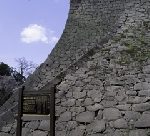
Kumamoto Castle which was greatly damaged by the great earthquake in 2016, currently aims to complete its restoration.
This castle built on the hillock of Mt. Chausuyama is one of the three great castles in Japan. The castle was built by Katou Kiyomasa (1562 – 1611), a master in castle walls in early modern times and a feudal lord. His style was magnificent and elegant.
This castle wall showed his determination to fight Tokugawa Ieyasu (1543 – 1616), the founder of the Tokugawa Shogunate, after the Battle of Sekigahara in 1600. The mason who built this castle was the same mason who built the Meganebashi, a two-arched bridge at Kurokawa, Aso province Kumamoto. Musha-gaeshi, curved stone walls at this castle was to be carved away inside for sustaining flushness. The arch of the bridge was made by extending the curve of Musha-gaeshi to the limit.
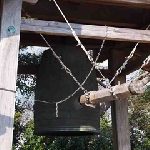
Nobeokajo Castle was built by Takahashi Mototane (1571 – 1614) a feudal lord, in 1603. The bell tower in the site of the castle tower still tells time. This castle was the early modern style which had Honmaru, the keep of a castle, Ninomaru, the second bailey and Sannomaru, the third bailey.The 22m-high stone wall was designed to prevent enemies entering from Ninomaru to Honmaru.
It is said to be designed to break down the stone wall when the cornerstone was removed. The noh theater performed at night by a fire, a unique thing in Nobeoka, is held in front of this stone wall in October. There are visitors from all over the country.
